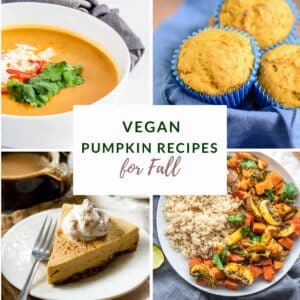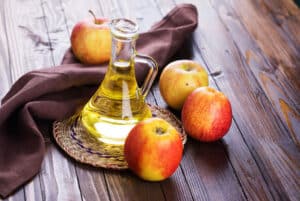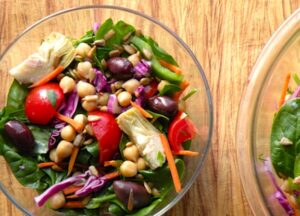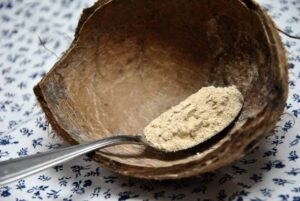Contributed by Ricki Heller, author of Living Candida-Free (Da Capo Lifelong, © 2015). The anti-candida diet (ACD) is often considered one of the most challenging diets out there. Designed to kill off excess candida (a natural form of yeast in the body that sometimes grows out of control), the ACD removes any foods that act as nourishment for candida; namely, all sugars and sweeteners except stevia, most fruits, moldy foods such as mushrooms or peanuts, alcohol, gluten, and all processed foods.
What’s left, you may ask?
Well, if you’ve been diagnosed with Candida Related Complex (or, simply, “candida”), you may be asking yourself that very question. Because candida overgrowth can cause a host of symptoms that are both annoying and potentially debilitating, it’s important to stick with the diet, as well as take any supplements or prescription antifungals that your healthcare practitioner recommends, long enough to diminish the yeast so you can regain your health.
But most anti-candida diets focus (heavily) on meat, fish, chicken and/or eggs, since protein doesn’t contain starches; and starches break down to sugars in the body and can feed the candida. Yet it is totally possible to recover from candida on a plant-based diet (I know—I did just that).
Here are some tips if you’ve been diagnosed with candida, or simply want to cut sugars out of your life and wish to maintain your plant-based diet through to the other side.
- Keep the overall glycemic index of your meals low - Eating low on the glycemic index doesn’t mean you have to forgo grains or legumes entirely (I didn’t); but keep portions small, and limited to one a day for each. That way, you won’t be providing the candida with its favorite food. Whole grains and pseudo-grains (such as millet, teff, buckwheat or quinoa) are actually fairly low glycemic, which means they won’t spike blood sugar levels. And beans and legumes contain both protein and carbs, so they digest more slowly than carbs alone.
Similarly, if you aim to include the nutritional triumvirate of protein, fat and fiber in all your meals and snacks, you’ll keep blood sugar stable (important to prevent slip-ups).
- Be sure to take in enough protein and fats! Just because you’re not eating meat doesn’t mean you can forgo protein. In fact, it may even be a good idea to count protein grams when you first begin. Not only does fat keep you satiated, but it also provides essential fatty acids, some of which themselves can fend off candida (coconut oil contains both caprylic acid and lauric acid, both known to be potent anti-fungals). Plus, adding fat to food just makes it taste good. This is not the time to go low fat!
- Eat raw as much as possible. Raw foods, as a rule, are more easily digestible than cooked and contain more nutrients. They are also incredibly alkalizing, essential to kick candida. And don’t forget that freshly squeezed juices are raw, too (just omit the fruit).
- Love your nuts and seeds. With the exception of peanuts (not really a nut anyway) and pistachios, all other nuts and seeds are permitted on the ACD, so go for it! And as long as they’re natural and unsweetened, nut and seed butters are fine, too (and don’t forget that tahini is technically sesame seed butter—mmm!). These nutritional powerhouses will add protein and healthy fats to your diet even as you kill off the candida. For best digestibility, try soaking your raw nuts and seeds in room temperature filtered water for 6-8 hours, then rinsing and draining, before consuming.
- Don’t give up your favorite foods! One of the reasons so many people slip with this diet is because they don’t include foods that they normally love (within the dietary guidelines of the ACD, of course). I’ve found that including smoothies, hummus, fries, kale salad and yes, even desserts, is essential to success on the diet. In fact, I made a point of including many tempting desserts in Living Candida-Free, to ensure that people wouldn’t feel deprived and could stick with it as long as necessary to succeed.
With the right strategies—and some killer recipes—you really can beat candida. And you can continue to enjoy your normal life while you do!
See also "It is the ONE" Single-Serve Pancakes" from Living Candida-Free.
*This post contains affiliate links. If the product is purchased by linking through this review, VegKitchen receives a modest commission, which helps maintain our site and helps it to continue growing!






Sylvie Leroy says
Thanks for this great article!
A lot of people tend to forget that to the overall glycemic index low as you mentioned.
It's I think the most important advice.
Sylvie
Leila says
You give a lot of tips that so many nutritionists and ACD diet plans contradict. Nuts can be dangerous; I've heard so many times not to eat so many different kinds of nuts, like cashews, because of their level of mold. You seem to neglect that. How could sweets be essential to the diet when the sugar that are inside of them is what keeps people dealing with these health problems - yeast feeds off of sugar. Your advice seems super off and not helpful.
Elena says
"Raw foods, as a rule, are more easily digestible than cooked and contain more nutrients."
Since when? Most raw foods create mucus in the body. What about the warmth element?
You are making statements that make no sense.
frank says
yeah raw veggies are not more digestible than cooked. i think you may have meant that the minerals, enzymes and vitamins from raw veggies are more intact when raw, but lightly heating helps the body break them down better. Carrots for example have more beta-carotene when cooked lightly. id reccomend maybe cutting raw veg thinly then rinsing under hot water or light steaming.
Marsha Waggoner says
Thanks for this information. I've been struggling with a candida diet that basically forbids all my usual foods (grains, legumes, veggies) and includes what, for me, is a ridiculous amount of meat, eggs, and fat. The only thing I've accomplished so far is a bit of weight loss: since I don't really like meat, I often skip meals. lol
Jane K says
Beans and legumes on a candida diet???? Every other site says its a big NO. Its all starchy...
Ricki says
Hi Leila,
Yes, there are definitely many contradictory diets out there, so it can be difficult to know what works. I've found over the years and working with hundreds of people that there is no "one" diet that works for everyone, so you really have to test out what works with your own body.
That said, it looks like you missed some ow what I wrote in this piece. Many anti-candida diets include nuts. As I mention in my book, Living Candida-Free, I chose to avoid the top 3 mold-containing nuts while still including the remainder of nuts with safer levels. Nuts, seeds, grains, legumes all contain some levels of mold, so you need to be moderate in our intake and ensure that you purchase really good quality, organic products.
In addition, I did mention that sweets are a part of the diet, but not sugar. Yes, there are natural sugars in fruits (which are omitted at the beginning of the diet). I use zero glycemic sweeteners for my treats, so they don't affect blood sugar and don't feed the candida.
Ricki says
Elena and Frank,
Sorry, but I, and science, disagree with you about raw foods. Raw foods contain enzymes that are completely destroyed by cooking. In that case, your pancreas is forced to compensate and produce more digestive enzymes to properly break down the foods, thus putting more strain on the body; this is not what you want when you're battling candida (or any disease).
In addition, organic raw foods contain natural soil-based beneficial bacteria that not only aid in digestion, but also boost the immune system.
Finally, cooking denatures the proteins in foods, which can alter their chemical makeup and make them more difficult to digest for some people.
However, it's true that cooking does release certain nutrients from raw foods, but only in some cases (such as the lycopene in tomatoes, for example). That's why I would never recommend a 100% raw diet, but do believe in eating some raw every day (ideally at every meal). Again, each body is different--so if raw doesn't work for you, by all means, please don't eat it.
Ricki says
Hi Jane K,
Please do your research. There are actually many candida diets out there that allow beans and legumes; they are a good source of both protein and fiber. If they don't work for you, please don't eat them.
Linda Simon says
I am on a plant base eating for almost 2 years now and live a very active lifestyle. I swim a mile a day, lift weights, and bicycle and need lots of energy. The candida diet is challenging enough, but I also took a food sensitivity test and showed I needed to limit 2/3 of my current diet. What is the best energy packed breakfast you can recommend for me. I also forgot to mention I am 68 years young. Linda